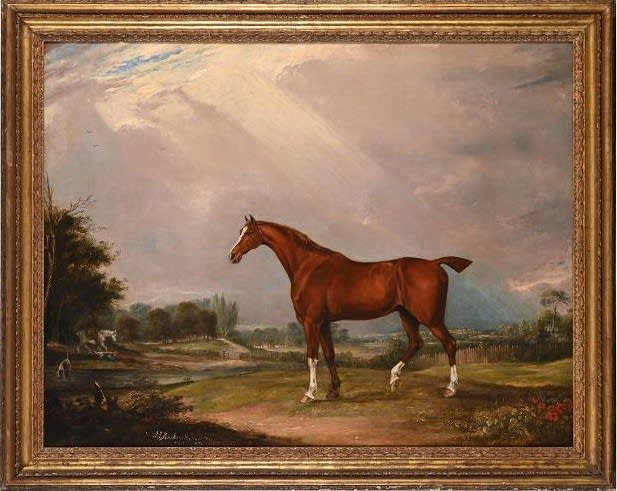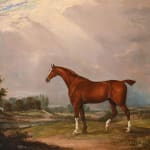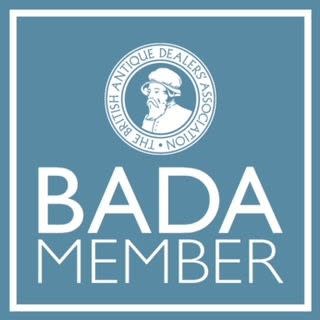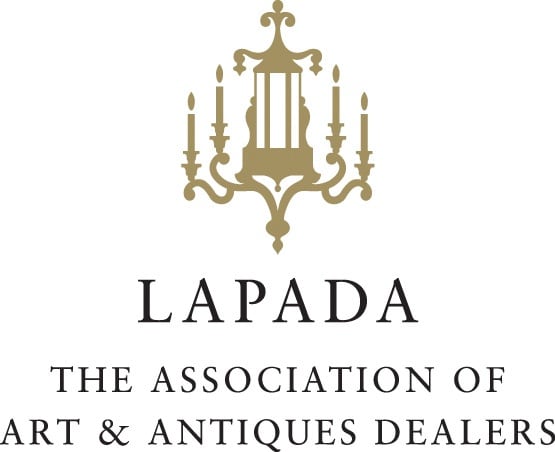John Ferneley Senior (1782-1860)
Literature
Sally Mitchell, The Dictionary of British Equestrian Artists, 1985A painting of a chestnut hunter in a landscape with a horse and rider accompanied by two hounds by a woodland river in the distance.
Signed and inscribed 'Melton Mowbray', lower left.
Oil on canvas in a giltwood frame.
Canvas size: 69 x 90cm
In frame: 85 x 95cm
John Ferneley Sr (1782-1860) was born the son of a Leicestershire wheelwright, the youngest of six children. He is known as one of the great British equine artists, perhaps only second to Stubbs in terms of raw ability.
Ferneley originally worked with his father, until by chance the Duke of Rutland saw some of his work on the side of a cart on which Ferneley and his father had been working. The Duke was so impressed with Ferneley that he persuaded John's father to allow him to become the pupil of Benjamin Marshall. Ferneley was so talented that apparently he produced almost perfect copies of his tutor's paintings and they were said to have been indistinguishable from the master’s. Marshall also enrolled him as a student of the Royal Academy Schools.
In 1804 Ferneley paid a man named Thomas Harrison to undertake his compulsory army service - a practice that was commonplace at the time. It was ironic that his first commission then came from the Leicestershire militia.
From then on he received widespread commissions and his reputation grew. Between 1808 and 1811 he made frequent trips to Ireland , where he painted pictures for the gentry. He established himself in Melton Mowbray where he built a studio and later a house, Elgin Lodge, on the Sleaford Road , where he remained for the rest of his life.
His work became very fashionable, and his patrons included many dukes and earls as well as some of the most famous personalities of the time such as Beau Brummel and the Count D’Orsay. It must have been a credit to his personality and intelligence that from such humble beginnings he was accepted as a friend of the Meltonians and his house was the Sunday afternoon meeting place for many of them. Ferneley would hunt, shoot and fish as a guest of many of his titled patrons.
Ferneley’s best work was painted in the period of 1810 to 1850, when he displayed his full repertoire of hunting, racing and horse scenes. His painting of horses was superb, his figures were at first less good, but he became a close friend of Sir Francis Grant who gave his some help with the painting of figures while Ferneley gave Grant lessons in horse painting. They combined on several procures, one painting figures and the other horses. Ferneley had a fine use of colour and his pictures are comparable to Marshall and second only to Stubbs. He signed very delicately, often with a pin head in the wet paint and often on the bar of a fence, stable door or other obscure part of the painting. His signature is always very distinguishable from his son John Junior who normally signed heavily in black in the corner of the painting.
Ferneley painted his last picture in 1860 at the age of seventy-eight.






